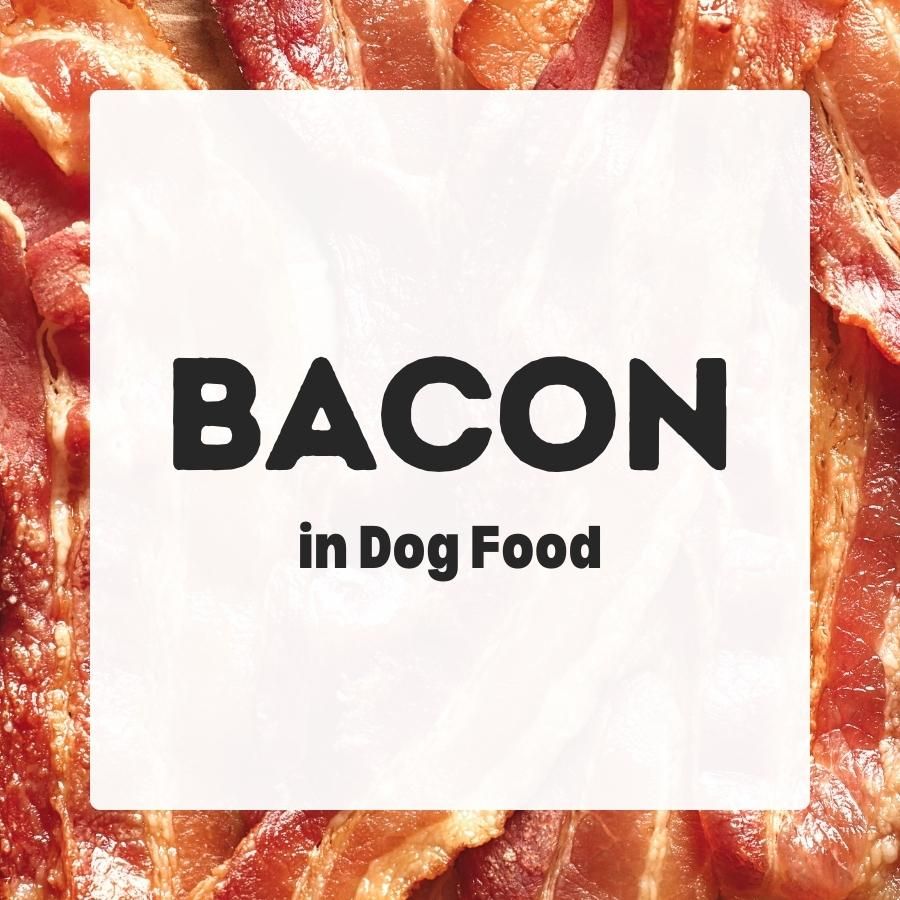Bacon is made from cured pork meat. It’s super tasty and dogs love it. It’s absolutely not the healthiest ingredient but bacon in dog food and treats can provide lots of flavor.
Contents
About Bacon
Bacon is a cured piece of pork.
Bacon is often made from pork belly but can include other cuts. It’s cured with salt or brine.
It’s usually included in dog food for its strong flavor.
Because we all know: Dogs love bacon!
Bacon provides some protein but is also very rich in fats and contains lots of sodium depending on the cooking method.
Bacon fat is the concentrated grease from rendered bacon and is incredibly high in saturated fatty acids.
| Nutrient content | |
|---|---|
| Water | 38-55 g |
| Protein | 9-16 g |
| Fat | 27-50 g |
| SFA | 13 g |
| MUFA | 16 g |
| PUFA | 6 g |
| Energy | 393 kcal |
| Phosphorus | 166 mg |
| Potassium | 201 mg |
| Sodium | 751 mg |
SFA: Saturated fatty acids.
MUFA: Monounsaturated fatty acids.
PUFA: Polyunsaturated fatty acids.
Bacon in Dog Foods
Bacon is added to dog food for its strong taste and smell.
Ingredients like bacon, smoked bacon, or bacon fat are sure ways to increase the palatability of a dog food.
That is, they make your dog have an appetite for his food.
Some pet food businesses only use ingredients like bacon broth or bacon flavor, a natural flavor compound that resembles bacon aroma.
Bacon is a highly processed meat. And regular consumption of ingredients like this has been shown to be unhealthy.

Much of the bacon produced today contains some level of nitrates or nitrites which could be harmful.
And suppliers might use added flavors, color additives, or other additives such as polyphosphate when producing bacon.
In moderation, some bacon or bacon fat is very tasty. But it’s not exactly the healthiest source of fat or protein for dog foods.
There’s probably not much to worry about if your dog eats some bacon treats from time to time. But you might want to think twice before feeding it as a regular part of his daily diet.
Further Reading
[1] U.S. Department of Agriculture. Agricultural Research Service. FoodData Central. 2019. fdc.nal.usda.gov
